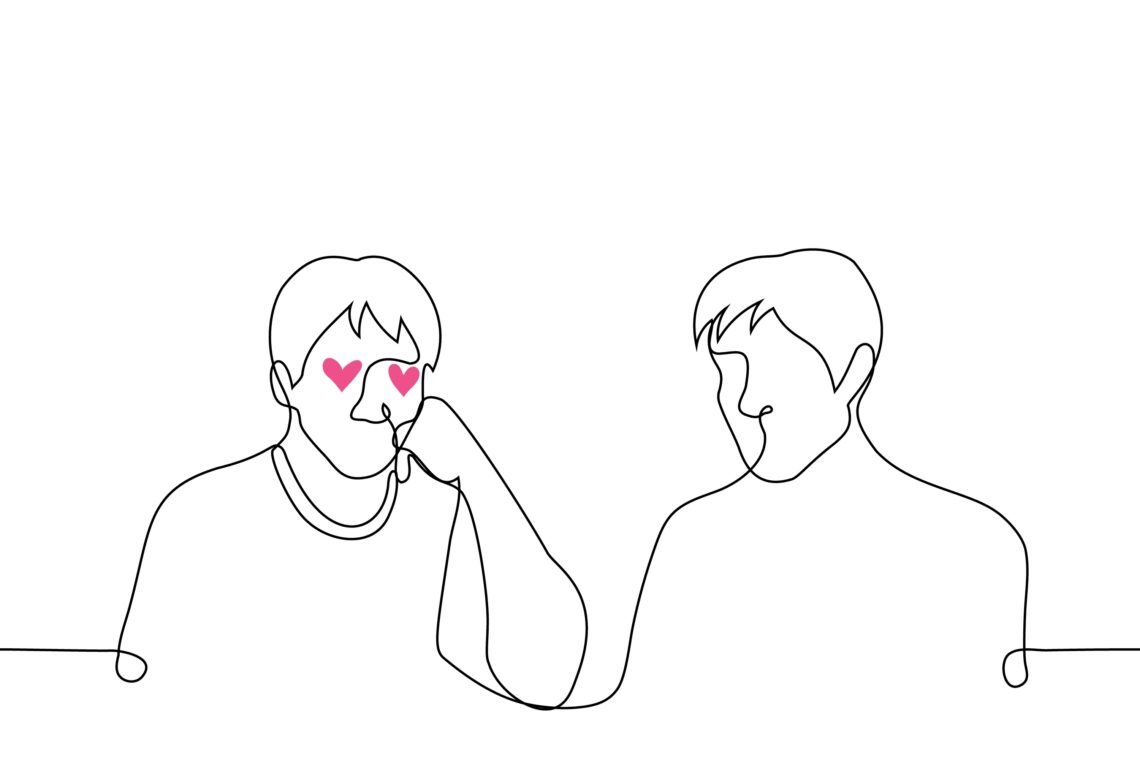Demiromantic is a relatively new term that was coined by the Asexual Visibility and Education Network (AVEN) in 2008. It describes a specific type of romantic attraction that falls somewhere on the aromantic spectrum.
If you’ve just recently learned the word and tried looking up the “demiromantic” definition in the Merriam-Webster Dictionary to no avail, don’t worry. While you can’t find the demiromantic meaning in the dictionary just yet, there are tons of resources online that can help you better understand this identity.
Here, we offer a brief but comprehensive explanation of what it means to be demiromantic.
Related: What does it mean to be demigender?
Never Miss a Beat
Subscribe to our newsletter to stay ahead of the latest LGBTQ+ political news and insights.
What Is Demiromantic?
Demiromantic is a type of romantic attraction. The label describes people who are only capable of developing a romantic attraction to another person if they can form an emotional bond with them. The term is derived from the Latin word “demi” which means “divided in half”, as it is believed to lie somewhere along the aromantic-romantic spectrum.
If all of that sounds confusing, that’s okay. As mentioned, demiromantic isn’t as well known or as well understood as other identities. But that doesn’t mean that it isn’t real.
To help you better understand the difference between demiromantic, demisexual, and demigender people, we explain some key concepts below.
Demiromantic vs Demisexual vs Demigender
Demiromantic is different from demisexual, which describes people who can only be sexually attracted to those they connect with on an emotional level. It is also different from demigender, which describes people who identify partially with one gender.

The Split Attraction Model
The split attraction model is a concept that helps people in the asexual and aromantic spectrums define their orientation. The model states that sexual attraction and romantic attraction are two separate and independent aspects of one’s orientation. This means that, while some people’s sexual feelings mirror their romantic feelings, this isn’t necessarily the case for everyone.
For example, someone who identifies as asexual – meaning they do not experience sexual attraction or desire for other people – can still experience romantic attraction. They may not want to have sex with others, but they may still feel the desire to pursue an emotionally intimate relationship with another person.
The inverse can also be true. Someone can identify as aromantic – meaning they don’t seek romantic relationships – but still be capable of being sexually attracted to other people.

The Aromantic Spectrum
In discussions of demisexuality, you’ll often come across mentions of the term “aromantic spectrum”. This describes a range of romantic orientations between aromantic and romantic. Demiromantic people fall somewhere within that range.
Here are some of the romantic orientations that also belong to the aromantic spectrum:
- Gray-romantic: People who may experience romantic feelings but only under certain conditions
- Lithromantic: People who experience romantic attraction but don’t want their feelings to be reciprocated
- Recipromantic: People who only become romantically attracted to someone when their feelings are reciprocated
- Aroflux: People who may fluctuate between feeling more or less romantic

The Primary And Secondary Attraction Model
Another theory that can help you understand demiromanticism is the primary and secondary attraction model.
Primary attraction describes the initial attraction that someone feels to another person. This is often likened to infatuation or having a crush, and can be ignited by little things like having common interests or the same sense of humor.
Secondary attraction, on the other hand, happens on a deeper level when you begin to form deeper bonds and fall in love with another person.
Most demiromantic people will describe themselves as being incapable of forming primary attractions for other people. However, they can experience secondary attraction but only after they develop a strong emotional connection with another person.

How Can You Tell If You’re Demiromantic?
So, what are some of the signs that you might be demiromantic? Here are a few situations that demiromantic people can often relate to:
- You find yourself capable of being sexually attracted to other people quite easily but rarely or never feel the “romance” unless you get to know the person on a deeper level.
- You rarely get “butterflies in your stomach” when someone you barely know approaches you with a romantic gesture.
- You feel like it’s easier to fall in love with people if you start off as friends first.
- If you identify as allosexual – meaning you are capable of being sexually attracted to others – you can easily maintain a “friends with benefits” type of relationship if you don’t get emotionally intimate with that person.
- You can’t quite relate to people who “fall in love” or have intense crushes on strangers and celebrities.
- You may have questioned whether you’re capable of falling in love with others, as it takes you longer to develop romantic feelings than your dates or partners.

What Is The Demiromantic Flag?
Demiromanticism is often viewed as a parallel to demisexuality. Thus, the demiromantic flag mirrors the demisexual flag in design and, partially, color scheme.
The flag consists of a thick white stripe at the top, a thin green stripe in the middle, a thick gray stripe at the bottom, and a black triangle on the left side pointing outwards. While the meanings of the colors are still up for debate, many in the community interpret them as representing the following:
- White: Platonic attraction, aesthetic attraction, and queer-platonic relationships;
- Green: The aromantic spectrum;
- Gray: Gray-aromanticism and demiromanticism;
- Black: The sexuality spectrum.

Final Thoughts
So, what does demiromantic mean? Demiromantic is a term used to describe individuals who do not experience romantic attraction until they can form a strong emotional bond with another person. There is no one way to be demiromantic, as everyone experiences attraction differently.
If you have ever felt like you are different or “broken” for not being able to develop strong romantic feelings as quickly as other people, don’t fret. There is nothing wrong with you – you might just be demiromantic!
Related: What it means to identify as neutrois
Don't forget to share:













